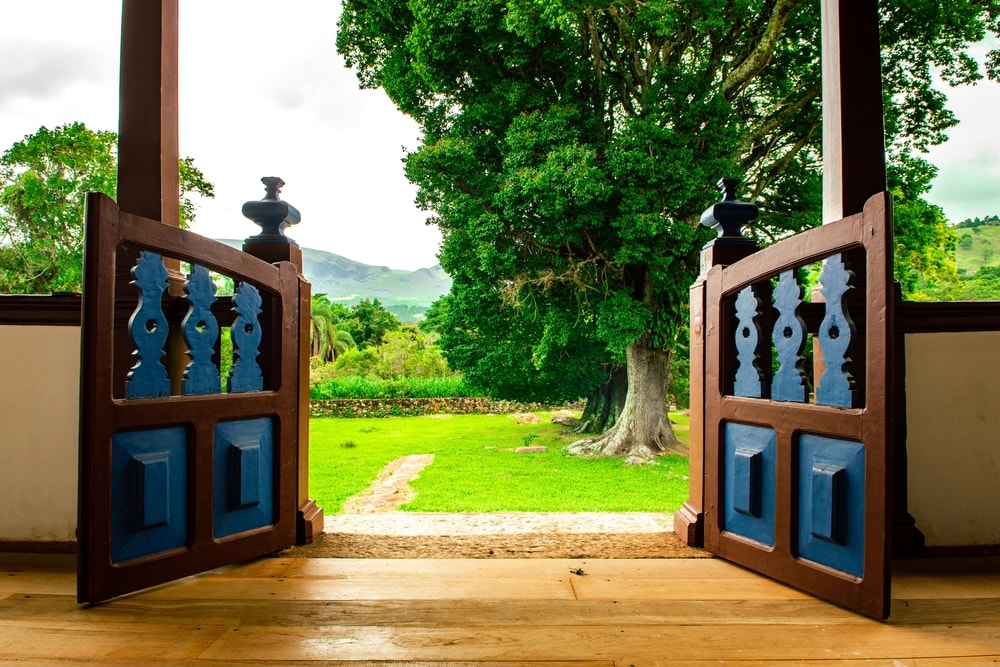Dear Network Landscape Show: Help My Yard!
Every time I turn on the television to one of those landscape programs on HGTV or the DIY Network, I invariably do so when the host of the moment is directing traffic on a yard makeover show. I sit and watch, astounded at the transformation unfolding on my television screen, and then make plans to stalk the next likely-looking landscape show host I see next time I’m at the friendly neighborhood home improvement store and hint loudly, “Oh, woe is me! My yard is in such a horrible state! I wish there was an extremely capable team of landscape professionals nearby who could help!”
I’ve suggested to my husband that our sad backyard is an excellent candidate, and that we, the enthusiastic but pitifully lost homeowners, have both the energy (ok, not so much that, but we are enthusiastic) and really cute kids who would look great on screen.
So far, he’s pretty sure I would have better luck waiting for fairies to show up and transform our garden to a little cottage paradise.
Plenty of resources tell you how to landscape right. This one will tell you what mistakes to avoid, unless you want to end up with a backyard that’s a perfect “before” shot on most landscape shows.

Understand Gravity
It’s not really necessary to have a complete grasp of Newtonian physics. I’m talking about an understanding of slopes, and that things will roll down a hill unless something is set in place to prevent it from happening. Ergo, if, let’s say, you have a yard with a pronounced slope leading from your house down about ten feet, do not expect mulch to remain in nice, neat little mounds around your plants. The mulch obeys gravity, it turns out, and it will move downhill, like a glacier, only much faster.
It’s also important to remember that water flows downhill. Those roses I planted immediately behind the house will become bone dry in a matter of seconds after I water them, given that they are planted in sand and that the mulch around the roses disappears days after I place it. Any day now, I expect to find the back of my house sticking out over said slope, water pipes dangling precipitously — which brings me to my next point.
Sand Is For Deserts, Not Gardens
Unfortunately, the majority of homes in my neck of the woods (or scrub, to be accurate) have the same problem. Everything is built on sand. This also means that everything is landscaped in sand. Sand, it turns out, is not friendly to most plants. Plants sentenced to life in my neighborhood are also sentenced to a slow, hot death under a blazing sky — unless, of course, you spend lots of money on bags of soil and many hours spreading that same soil everywhere in your yard. The problem is that within seconds, every plant in the neighborhood has heard about this thing called “soil” and vomits copious amounts of every seed in this hemisphere to land in the beautiful, wonderful soil, trying to take advantage of opportunity when it presents itself.
Soil, unlike sand, is good for plants. The weeds thrive, at least. If you like the look of weeds, by all means, ignore them until they’re roughly the size of your toddler before you declare war on the local weed population.
Grass is Always Greener — on Television
It turns out that the lovely grass that grows in profusion on most golf courses and lovely community areas does so only because it is watered on a regular basis. We have learned the hard way that if we depend on Mother Nature to provide all of the liquid sustenance our yard needs and we do not supplement it, we will not have a lawn. Not only that, but the slope will laugh at us as it speeds along its way, devouring what’s left of the yard.
Therefore, it is of great importance that you know what the needs are for your particular lawn before you commit to the expense and effort of installing it. I’m sure if any understanding Lawn Care Professional should take pity on our struggling turf, we’ll find out exactly what sort of lawn works best for our area and our needs.
Should we not hear from any home improvement show at any point in the near future, we’ll try to soldier on as best as we can. At least we’ve learned a few important lessons along the way. Until then, I’m going to consult every landscaping and home improvement show I possibly can. At some point, they’re bound to head our way. Meanwhile, I’ve got to practice my delivery.